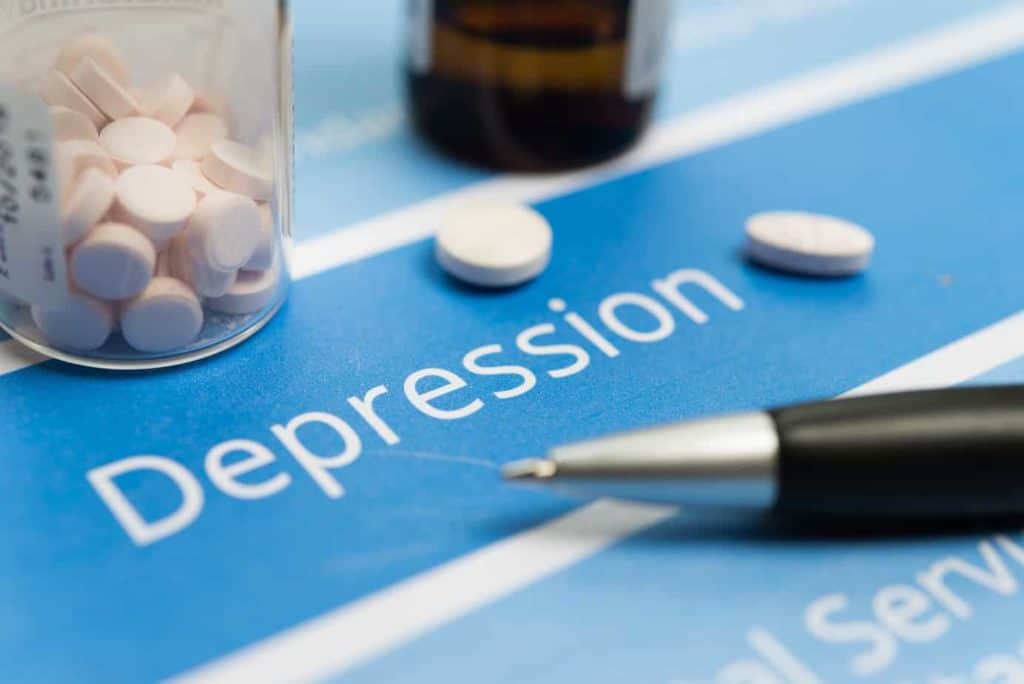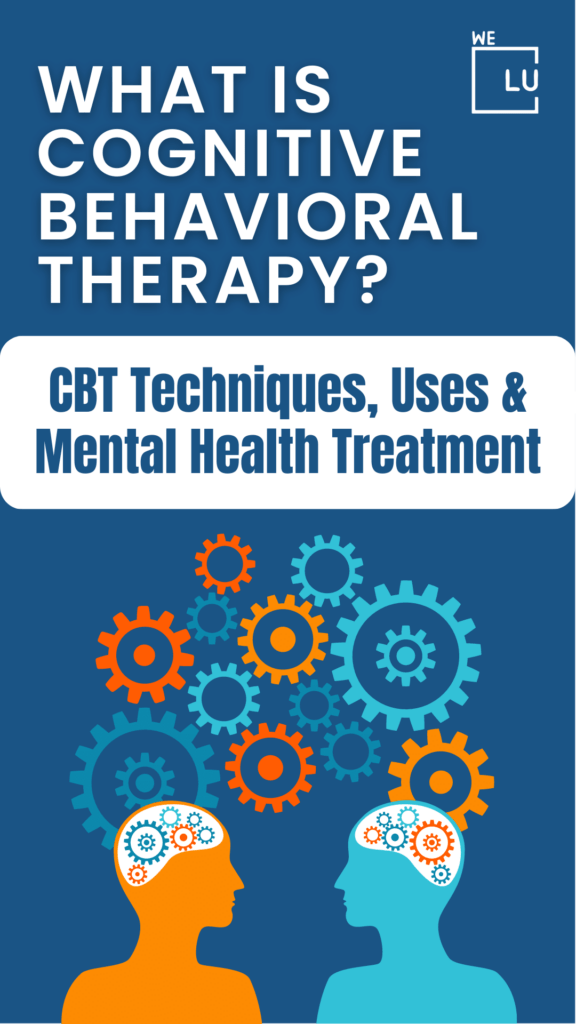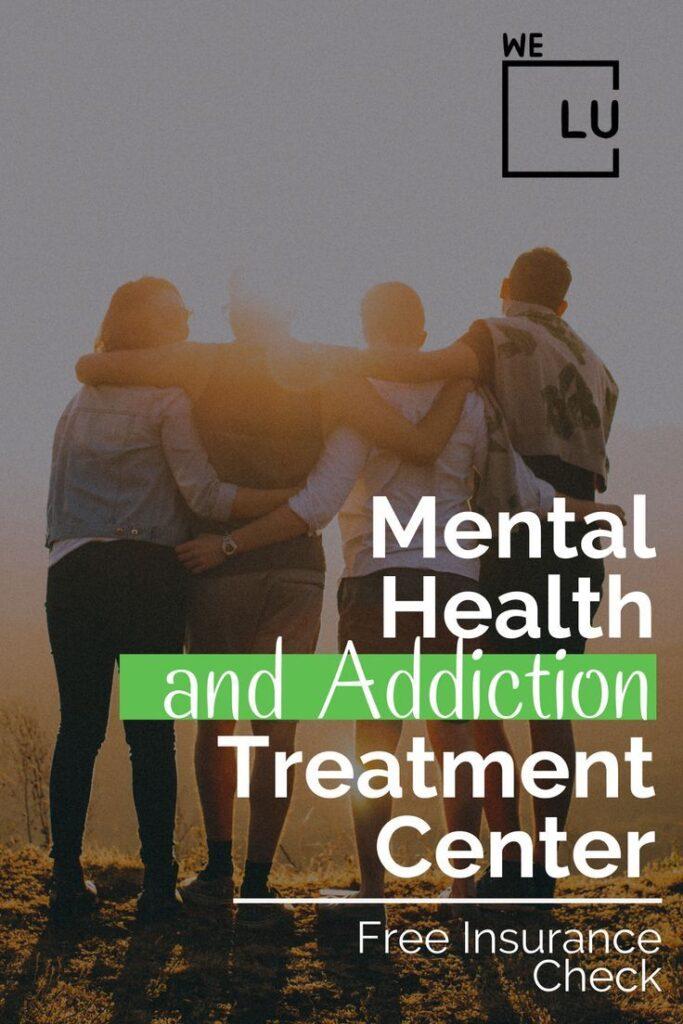Major Depressive Disorder Treatments Overview
Major depressive disorder, or MDD, is a prevalent and debilitating mental health condition affecting many people. Fortunately, several excellent and effective treatment options are available to help individuals manage and overcome this disorder. Treatment approaches for MDD typically involve a combination of psychotherapy, medication, and lifestyle modifications, tailored to the individual’s needs and preferences.
The optimal treatment approach for MDD varies from person to person. What works for one individual may not work for another, and a combination of different therapies may be necessary. Seeking the guidance of mental health professionals, such as psychiatrists and therapists, is essential in developing a personalized therapy plan that addresses the unique needs and circumstances of each individual with MDD.
Diagnosis and Treatment for Major Depressive Disorder
Diagnosing major depressive disorder involves a comprehensive assessment by a qualified healthcare professional, typically a psychiatrist or a psychologist. The diagnostic process typically includes the following components:
Clinical Interview for Major Depressive Treatment
The healthcare professional will conduct a thorough interview to gather information about the individual’s symptoms, medical history, and psychosocial factors. They will inquire about the duration, frequency, and intensity of depressive symptoms, such as the following:
- Persistent feelings of sadness, emptiness, or hopelessness.
- Loss of interest or enjoyment in activities once enjoyed.
- Significant changes in appetite or weight.
- Insomnia or excessive sleeping.
- Fatigue or loss of energy.
- Feelings of worthlessness or extreme guilt.
- Difficulty concentrating, making decisions, or remembering things.
- Restlessness or slowed movements and speech.
- Recurrent thoughts of death or suicide.
- Physical signs and symptoms include headaches, digestive problems, or chronic pain.
They may also explore any potential underlying medical conditions or medications that could contribute to the symptoms.
Diagnostic Criteria for Major Depressive Disorder
The healthcare professional will refer to established diagnostic criteria, such as the DSM-5 (Diagnostic and Statistical Manual of Mental Disorders), published and prepared by the American Psychiatric Association. MDD is characterized by specific symptoms and their impact on daily functioning. According to the DSM-5 criteria, the symptoms should be present for at least two weeks and significantly impair social, occupational, or other important areas of functioning.
Screening Tools for Major Depression Treatments
Various screening tools and questionnaires may be used to aid in the diagnostic process. These tools assess the severity of depressive symptoms and help gauge the individual’s level of impairment. Examples include the Beck Depression Inventory (BDI), the Patient Health Questionnaire-9 (PHQ-9), and the Hamilton Rating Scale for Depression (HAM-D).
Differential Major Depressive Disorder Diagnosis
It is essential to differentiate MDD from other psychiatric disorders that may present with similar symptoms. The healthcare professional will consider alternative explanations and rule out other conditions, such as the following:
- Bipolar disorder.
- Persistent depressive disorder (Dysthymia).
- Adjustment disorder with depressed mood.
- Seasonal affective disorder (SAD).
- Anxiety disorders.
- Substance use disorders.

Skip To:
Learn More:
- Over The Counter Medicine For Anxiety And Depression
- Depression Treatment, Diagnosis, & Causes
- Women’s Depression Treatment Center
- Inpatient Depression Treatment
- Severe Depression Treatment
- When To Go To A Depression Hospital?
- Residential Treatment for Depression
- Mental Health Rehab for Depression
- Can You Go To Rehab for Depression? What To Expect
- Neurofeedback Therapy for Depression
Accurate diagnosis is crucial for appropriate treatment planning. It is essential for individuals experiencing depressive symptoms to consult with a qualified mental health treatment center for a thorough evaluation and diagnosis. A comprehensive assessment helps ensure the treatment approach is tailored to the individual’s needs and circumstances.
Major Depressive Disorder Fact Sheet
Understanding Major Depressive Disorder
Major depressive disorder is defined or characterized by a persistent and pervasive sadness, hopelessness, and a loss of interest or pleasure in activities. It goes beyond life’s regular ups and downs and significantly impacts an individual’s thoughts, emotions, and daily functioning.
People with MDD may experience the following:
- Changes in appetite and sleep patterns.
- Low energy levels.
- Difficulty concentrating.
- Feelings of worthlessness or guilt.
- Recurrent thoughts of death or suicide.
MDD is more than just feeling “down” or experiencing temporary sadness. It is a complex disorder with genetic, biological, environmental, and psychological aspects of living contributing to its development.
Diagnosis is typically made based on specific symptoms that persist for at least two weeks and significantly impair social, occupational, or other crucial areas of functioning.
Major Depressive Disorder Treatment Plan
Think of it as your roadmap to better mental health. Treatment is more successful when you work with your doctor to organize your plan. It can change as your condition changes, but it’s often broken down into three parts:
- The acute or first phase. This usually lasts between 6 and 12 weeks and aims to ease symptoms.
- The continuation phase. This lasts for several more months and aims to get the most improvement.
- The maintenance phase. This is ongoing. The goal is to keep your symptoms from coming back.
Medication Treatment of Major Depression
What is the role of medication? Antidepressants target problems with chemicals in the brain that could be behind your depression. Several things help your doctor decide which drug may work best. These include:
- Your specific symptoms.
- Medications you take for other conditions.
- What’s likely to cause the fewest side effects?
Antidepressants can help, but not always as quickly as you might hope. Several factors determine how well a drug works, including your genes. The symptoms may ease in a week, but you may not feel the full effects for 2 or 3 months.
How to manage side effects? Some individuals quit taking their medication because of side effects. These vary from one medication to another. But it would help if you spoke to your doctor. That’s because there are usually ways to manage side effects. They include:
- A lower dose.
- A different antidepressant.
- Another drug to control the side effect.
Do not just try to disregard the adverse effects. The stronger the side effects are, the more tempted you might be to give up on treatment. That can set back your recovery.

Get Your Life Back
Find Hope & Recovery. Get Safe Comfortable Detox, Addiction Rehab & Dual Diagnosis High-Quality Care.
Hotline(844) 597-1011Major Depression Disorder Treatment Statistics
Depression treatments, such as psychotherapy and medication, are effective in alleviating depressive symptoms and improving overall well-being for many individuals. The success rate varies, but studies have indicated that around 50-60% of people with depression experience significant improvement with treatment.
Combining different treatment modalities, such as psychotherapy and medication, often yields better outcomes than using only one approach. This multimodal treatment approach is efficient for moderate to severe depression.
7.5%
It is estimated that MDD accounted for 7.5% of all years lived with disability in the US in 2017.
Source: NCBI
64.1%
Despite the availability of effective treatments, a significant treatment gap exists for individuals with MDD. In 2019, only 64.1% of adults with MDD in the past year received any form of mental health treatment.
Source: NSDUH
25.9%
The lifetime risk of developing MDD is estimated to be around 16.2% for men and 25.9% for women in the US.
Source: JAMA Psychiatry
What is Treatment Resistant Depression?
Treatment resistant depression is when individuals do not experience significant improvement in their depressive symptoms despite receiving adequate and appropriate treatment.
It is typically diagnosed when a person has not responded to multiple trials of antidepressant medications or psychotherapies. The exact causes of treatment resistant depression are not fully understood, but factors such as genetic predisposition, underlying medical conditions, and neurobiological abnormalities may contribute to its development.
Individuals with treatment-resistant depression often struggle to find effective treatment options that can help alleviate their symptoms. In such cases, healthcare professionals may explore alternative approaches, such as the following:
- Augmenting therapies (adding additional medications or treatments).
- Switching to different classes of antidepressants.
- Considering more specialized interventions like electroconvulsive therapy (ECT) or transcranial magnetic stimulation (TMS).
The management of treatment-resistant depression requires close collaboration between the individual and their healthcare team to explore various strategies and find the most suitable treatment approach to improve their quality of life.

Get Help. Get Better. Get Your Life Back.
Searching for Accredited Drug and Alcohol Rehab Centers Near You?
Even if you have failed previously and relapsed, or are in the middle of a difficult crisis, we stand ready to support you. Our trusted behavioral health specialists will not give up on you. When you feel ready or just want someone to speak to about therapy alternatives to change your life call us. Even if we cannot assist you, we will lead you to wherever you can get support. There is no obligation. Call our hotline today.
(844) 597-1011Major Depressive Disorder Therapies
Psychotherapy is an essential treatment modality for major depressive disorder (MDD). It involves talking with a trained mental health professional, such as a psychiatrist, psychologist, or qualified licensed therapist, to explore and address the underlying causes and symptoms of depression. Several types of therapy for major depressive disorder have shown efficacy for long-term maintenance and mental health recovery.

- CBT Therapy: Cognitive-behavioral therapy focuses on identifying and modifying negative thought patterns and behaviors contributing to depression. It helps individuals develop healthier coping strategies, challenge negative beliefs, and learn new skills to manage depressive symptoms effectively.
- Interpersonal Therapy (IPT): IPT focuses on improving interpersonal relationships and addressing social conflicts that may exacerbate depressive symptoms. It aims to enhance communication skills, resolve interpersonal difficulties, and support rebuilding social connections.
- Psychodynamic Therapy: Psychodynamic therapy explores unconscious processes and unresolved conflicts that may contribute to major depressive signs and symptoms. It involves examining past experiences, childhood relationships, and emotional patterns to gain insight into underlying issues and promote healing.
- Mindfulness-Based Therapies: One example is the (MBCT) or mindfulness-based cognitive therapy or (ACT) acceptance and commitment therapy, which incorporates mindfulness techniques to help individuals develop greater awareness and acceptance of their thoughts and emotions. These therapies can assist in reducing rumination and increasing resilience to depressive symptoms.
Psychotherapy for MDD typically involves regular sessions over a specified period. The specific type and duration of therapy may vary depending on the individual’s needs, preferences, and the therapist’s expertise. Working collaboratively with a mental health professional is crucial to examine and determine the most suitable psychotherapeutic approach for treating major depressive disorder.
Adjunctive Treatment of Major Depressive Disorder
About half of patients who receive treatment with antidepressant drugs for major depressive disorder (MDD) do not achieve complete remission of symptoms. Despite treating depression effectively with short-term antidepressant drugs, the problem of relapse/recurrence remains. Treatment of depression by pharmacological means will likely leave residual symptoms in most patients. Such symptoms produce impairment and are important risk factors for relapse.
Researchers continue to seek complementary treatments that may improve residual symptoms of depression safely and sustain remission. Physical exercise may be a helpful resource. According to the National Center for Biotechnology Information (NCBI), exercise is one potential treatment for MDD in which there are positive research findings. The use of exercise in the treatment of MDD has gained support, as evidenced by the inclusion of exercise treatment in the American Psychiatric Association’s most recent treatment guidelines.
Depressive symptoms are temporarily reduced immediately following acute bouts of aerobic exercise. Patients may experience improvements in depressive symptoms in as little as four weeks; however, continued exercise for at least 10–12 weeks is necessary for the most excellent antidepressant effect. Psychosocial strategies should be implemented to promote adherence to the exercise program. Aerobic exercise can include walking/running outside, cycling, using a treadmill, or using an elliptical machine.
Biological Treatment for Major Depressive Disorder
Compared with the earlier generation of antidepressants exemplified by the tricyclics, selective serotonin reuptake inhibitors (SSRIs) have comparatively few side effects and lower cardiotoxicity, making them safer in overdose. The combination of safety, tolerability because of low side effects, and efficacy has undoubtedly contributed to a steadily rising number of SSRI prescriptions in recent years.
The SSRIs include fluoxetine, fluvoxamine, paroxetine, sertraline, citalopram, and escitalopram (the active enantiomer of citalopram). As a class, they are nonsedative (apart from fluvoxamine) and are not associated with an increased appetite or weight gain. Indeed, they can have an appetite-suppressing effect, and nausea and vomiting may be provoked, particularly at high doses.
An activating effect with restlessness in the first week or two and increased anxiety may be reported, but this does not usually persist. More controversially, SSRIs, in general, and fluoxetine and paroxetine, in particular, have been associated with increased suicidal ideation and an increased risk of suicide. As with restlessness and anxiety, suicidal ideation and behavior occur most commonly in the early stages of treatment.
First-class Facilities & Amenities
World-class High-Quality Addiction & Mental Health Rehabilitation Treatment
Rehab Centers TourRenowned Addiction Centers. Serene Private Facilities. Inpatient rehab programs vary.
Addiction Helpline(844) 597-1011Proven recovery success experience, backed by a Team w/ History of:
15+
Years of Unified Experience
100s
5-Star Reviews Across Our Centers
10K
Recovery Success Stories Across Our Network
- Low Patient to Therapist Ratio
- Onsite Medical Detox Center
- Comprehensive Dual-Diagnosis Treatment
- Complimentary Family & Alumni Programs
- Coaching, Recovery & Personal Development Events
Medication Treatments for Major Depressive Disorder
Major depressive disorder can be managed with different treatment modalities, including pharmacological, psychotherapeutic, interventional, and lifestyle modifications. The initial treatment of MDD includes medications or/and psychotherapy. Combination treatment, including both medications and psychotherapy, is more effective than either of these treatments alone.
FDA-approved medications for the treatment of MDD are as follows: All antidepressants are equally effective but differ in side-effect profiles.
- (SSRIs) Selective serotonin reuptake inhibitors include fluoxetine, sertraline, citalopram, escitalopram, paroxetine, and fluvoxamine. They are usually the first line of treatment and the most widely prescribed antidepressants.
- Serotonin-norepinephrine reuptake inhibitors (SNRIs) include venlafaxine, duloxetine, desvenlafaxine, levomilnacipran, and milnacipran. They are often used for depressed patients with comorbid pain disorders.
- Serotonin modulators are trazodone, vilazodone, and vortioxetine.
- Atypical antidepressants include bupropion and mirtazapine. They are often prescribed as monotherapy or augmenting agents when patients develop sexual side effects due to SSRIs or SNRIs.
- Tricyclic antidepressants (TCAs) are amitriptyline, imipramine, clomipramine, doxepin, nortriptyline, and desipramine.
- Monoamine oxidase inhibitors (MAOIs) available are tranylcypromine, phenelzine, selegiline, and isocarboxazid. MAOIs and TCAs are not commonly used due to the high incidence of side effects and lethality in overdose.
- Other medications include mood stabilizers, antipsychotics which may be added to enhance antidepressant effects.
We Level Up Residential Rehab Treatment for Major Depression
Residential rehab, also known as residential treatment or inpatient treatment, can be an option for individuals with major depressive disorder who require intensive and structured care. While residential rehab is more commonly associated with substance abuse or addiction treatment, there are specialized facilities that provide residential programs for mental health disorders, including dual diagnosis. Dual-diagnosis treatment programs are offered for people with co-occurring disorders like depression and addiction. Here are some critical points about residential rehab for MDD:
- Intensive Treatment Setting: Residential rehab for MDD offers a highly structured and supportive environment where individuals can receive round-the-clock care from a multidisciplinary team of mental health professionals. This setting allows for close monitoring of symptoms, medication management, and a focused approach to treatment.
- Comprehensive Treatment Approach: Residential rehab programs for MDD typically offer a range of therapeutic interventions, including individual therapy, group therapy, family therapy, and various evidence-based treatments. The goal is to provide a comprehensive treatment approach that addresses the underlying factors contributing to depression and equips individuals with coping skills to manage their symptoms.
- Supportive Environment: Residential rehab provides a supportive community of peers who can relate to the challenges of living with MDD. Being surrounded by individuals going through similar experiences can offer a sense of validation, understanding, and connection. Moreover, a structured routine, away from the stressors of daily life, can create a safe and focused environment for individuals to engage in their recovery fully.
The decision to pursue residential rehab should be made in collaboration with a mental health treatment professional who can assess the individual’s needs and determine sufficient care. If you don’t know where to start or are looking for treatment options, connect with We Level Up mental health treatment center today.
World-class, Accredited, 5-Star Reviewed, Effective Addiction & Mental Health Programs. Complete Behavioral Health Inpatient Rehab, Detox plus Co-occuring Disorders Therapy.
CALL(844) 597-1011End the Addiction Pain. End the Emotional Rollercoaster. Get Your Life Back. Start Drug, Alcohol & Dual Diagnosis Mental Health Treatment Now. Get Free No-obligation Guidance by Substance Abuse Specialists Who Understand Addiction & Mental Health Recovery & Know How to Help.
Top 3 Treatments for Major Depression FAQs
-
What is the first line treatment for major depressive disorder?
The first line treatment for major depressive disorder (MDD) typically involves a combination of psychotherapy and medication. Selective serotonin reuptake inhibitors are often suggested as the first choice of medication due to their effectiveness and relatively favorable side effect profile. Cognitive-behavioral therapy (CBT) is the primary psychotherapy approach, as it helps individuals distinguish and change negative thought patterns and behaviors associated with depression. However, the specific treatment plan is determined by the individual’s symptoms, preferences, and treatment history, so it’s crucial to consult a healthcare professional for personalized recommendations.
-
What is an adjunctive treatment for major depressive disorder?
An adjunctive treatment for major depressive disorder is employed in addition to primary therapy, such as medication or psychotherapy, to enhance its effectiveness. One example of an adjunctive treatment for MDD is augmenting antidepressant medication with atypical antipsychotics, which benefits some individuals with treatment-resistant depression. Other adjunctive therapies may include transcranial magnetic stimulation (TMS), electroconvulsive therapy (ECT), or alternative approaches like exercise, mindfulness-based practices, or herbal supplements. The choice of adjunctive treatment depends on the individual’s needs and should be determined in collaboration with a healthcare professional.
-
Can I take single-dose psilocybin for a treatment-resistant episode of major depression?
Psilocybin, the active compound found in certain species of mushrooms, has shown promising results in clinical trials for treating treatment-resistant depression. However, psilocybin is a controlled substance, and its use for therapeutic purposes is still being researched and regulated. Suppose you are considering psilocybin as a treatment option. In that case, consulting with a qualified healthcare professional who can provide guidance, discuss potential risks and benefits, and ensure your safety throughout the process is crucial. Self-administering psilocybin without proper medical supervision is strongly discouraged.
Clinical Depression / Depression Symptoms / Signs of Depression / Major Depressive Disorder Help
Clinical depression, also known as (MDD) major depressive disorder, is a prevalent and severe mental health condition. It significantly affects a person’s daily functioning, relationships, and overall quality of life. Treatment options for MDD typically include psychotherapy, medication, or a combination of both, tailored to the individual’s needs.
Recognizing the symptoms of MDD is crucial as it enables individuals to seek appropriate treatment and support. Symptoms such as persistent sadness, loss of enjoyment of interests, changes in appetite or sleeping patterns, fatigue, and difficulty concentrating should be discussed with a healthcare professional to explore treatment options and improve overall well-being.
Reach out to We Level Up whenever you need someone to talk to. 24-hour Toll-free Hotline (954) 475-6031
Experience Transformative Recovery at We Level Up Treatment Centers.
See our authentic success stories. Get inspired. Get the help you deserve.
Start a New Life
Begin with a free call to an addiction & behavioral health treatment advisor. Learn more about our dual-diagnosis programs. The We Level Up Treatment Center Network delivers recovery programs that vary by each treatment facility. Call to learn more.
- Personalized Care
- Caring Accountable Staff
- World-class Amenities
- Licensed & Accredited
- Renowned w/ 100s 5-Star Reviews
We’ll Call You
Search We Level Up Major Depressive Disorder Treatments, Mental Health Topics & Resources
Sources
[1] Major Depressive DIsorder Treatments – We Level Up Mental Health Treatment Center Florida
[2] Karrouri R, Hammani Z, Benjelloun R, Otheman Y. Major depressive disorder treatments and future challenges. World J Clin Cases. 2021 Nov 6;9(31):9350-9367. Doi 10.12998/Wjcc. v9.i31.9350. PMID: 34877271; PMCID: PMC8610877.
[3] Bains N, Abdijadid S. Major Depressive Disorder Treatments. [Updated 2023 Apr 10]. In: StatPearls [Internet]. Treasure Island (FL): StatPearls Publishing; 2023 Jan-. Available from: https://www.ncbi.nlm.nih.gov/books/NBK559078/
[4] Major Depression – National Institute of Mental Health (NIMH)
[5] What is Depression? – Substance Abuse and Mental Health Services Administration (SAMHSA)
[6] Management of Major Depressive Disorder (MDD) (2022) – Veterans Affairs (.gov)
[7] Mental Health Conditions: Depression and Anxiety – Centers for Disease Control and Prevention (CDC)
[8] Depression: MedlinePlus Genetics Available from https://medlineplus.gov/genetics/condition/depression/
[9] Major Depressive Disorder Treatments: Developing Drugs for Treatment Available from https://www.fda.gov/regulatory-information/search-fda-guidance-documents/major-depressive-disorder-developing-drugs-treatment
[10] Mental Health and Mental Disorders – Healthy People 2030 Available from https://health.gov/healthypeople/objectives-and-data/browse-objectives/mental-health-and-mental-disorders




